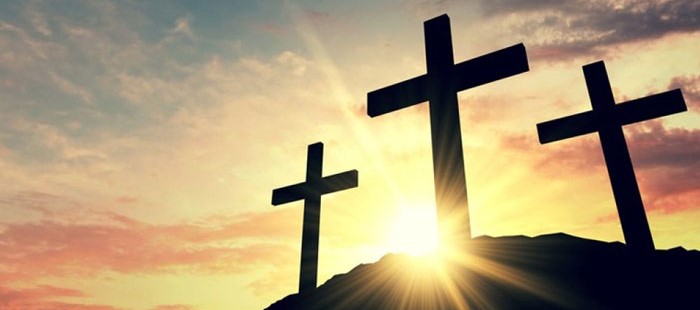Earlier this year, I had the privilege of preaching a sermon at my college church. Now almost two months later, I’m still living less than 3 miles away from that church but I have not been back since! That must have been one terrible sermon, right? Hopefully not. Between travels, job searches, and now a global pandemic, I simply have not had the opportunity to return to that beloved community. Let me be honest with you—it’s been hard, especially as someone who holds presence and community as core tenets in my philosophy of ministry and life. The more I’ve reflected on that sermon, the more I’ve come to realize just how foreshadowing it was for myself, for our small church community, and for our world as a whole. So I write this as a follow-up to that sermon, a reflection for myself and maybe for you as well.
The title of the sermon on that fateful Sunday back in February was “Beyond the Mountaintop.” (That whole sentence just sounds awfully foreboding). That day was also Transfiguration Sunday, the ecclesial gathering just before the beginning of Lent, an odd celebration of sorts. The scripture texts that day included Matthew 17:1-9, placing Jesus on the mountaintop with a few of his disciples, and included 2 Peter 1:16-21.

From those verses, I identified three signs from God that could be learned from this ‘mountaintop experience’ and then later applied in our lives when we descend the mountain, as does inevitably happen with such experiences. First, we are to listen obediently to God’s instruction: “get up and do not be afraid” (Matthew 17:7) and be prepared to respond to God’s call on our lives beyond the mountain. Second, we are to embody God’s glory as Christians—or “little Christs” in the words of one ancient church father. We should be tangible incarnations of God’s grace and mercy away from the mountain out in the world. Lastly, we are assured by this transfiguring ‘mountaintop experience’ that we are empowered by the Holy Spirit to participate in the very real family and work of God—inspired to help bring God’s kingdom come here on earth as it is in heaven.
But we are no longer on the mountaintop, no longer gathering weekly in a physical community, no longer living in a world of traditional ministry and hands-on care, no longer living a world that is even close to the ‘normal’ we had before. For now, maybe that can be ok—maybe it’s an opportunity to be transformed. After that transfiguring mountaintop experience, it is said in one gospel that Jesus then turned his face to Jerusalem. Everything he had already experienced suddenly pivoted, reoriented, and turned upside down as he descended the mountain and began a journey toward his death—the ultimate realization of his humanity. That was a dark valley indeed that he entered, especially the deadly Holy Week leading up to his crucifixion.

I think that’s where a lot of us are in our current day as well. We turned on Transfiguration Sunday and looked down the mountain. None of us could have imagined what lay in wait for us. So many weeks later, we have continued our Lenten journey and encountered deaths of many sorts. For some, they have been very real deaths, deeply saddening and painful. And for so many others, they have been deaths of normalcy and of wellness in many forms, be it mental, emotional, physical, social, financial, etc. But death was not the end of Jesus’ Holy Week, nor does it have to be us now despite this ruthless pandemic.
No, for then came the transformation of Easter—the resurrection, new life, and a hope for a better future! On earth, as it is in heaven! And it goes even further, for the end of Holy Week, the end of our Lenten journey, the end of our descent from the mountain, the end of reality as we know it holds something spectacular: a beginning! The beginning of a resurrected savior, the beginning of a global church, the beginning of a new kingdom come! In fact, that beginning is not something that is only just now starting, but has been working ever since our old paradigm began to crumble, all the way back on Transfiguration Sunday when our lives were reoriented just like Jesus.
One thing that I reiterated several times in that sermon back at the beginning of this all was a phrase from C. S. Lewis’ Chronicles of Narnia: “Remember the signs and believe the signs.” He further noted through the voice of Aslan, “The signs you have learned here [on the mountain] will not look at all as you expect them to look, when you meet them down there,” down in the valley of the shadow of death. Maybe the instructions of God are now things we are learning in daily prayers rather than in sermons. Maybe God is now made incarnate through the tireless service of medical personnel. Maybe we have a need to lean into the inspiring affirmation of the Holy Spirit now more than ever to hold our scattered church bodies together.

These signs and the lessons learned from them may look different for each of us. I would challenge you to look for the unconventional signs God is placing in your life. We must remember that God did not cause this pandemic, but God does have power over and through it. God will provide all the more if we listen to God’s word and if we care for each other, empowered by the Holy Spirit to do just that. And at the end of all this…death, it will be made apparent how God has been transforming our reality all along into a new beginning, defined not by death but by life, and life to the fullest. “Remember the signs and believe the signs.” Amen.
Media by Russell Lamb.




























